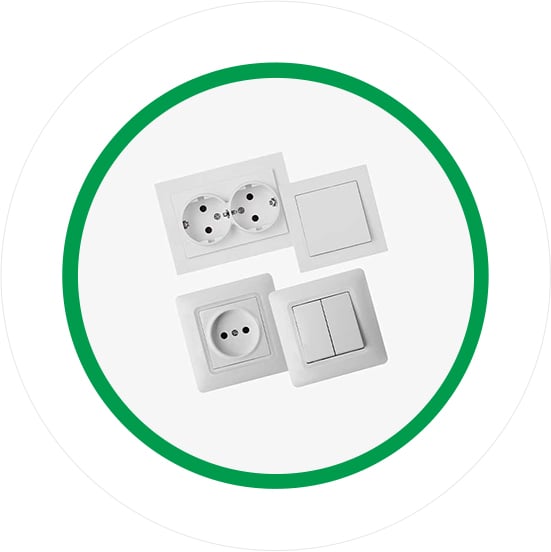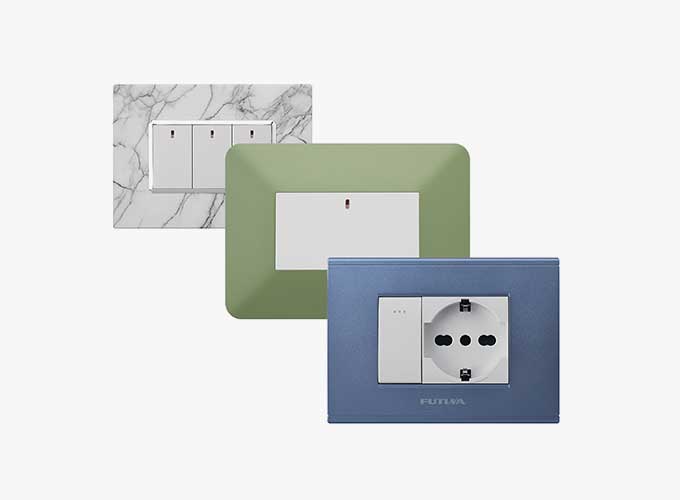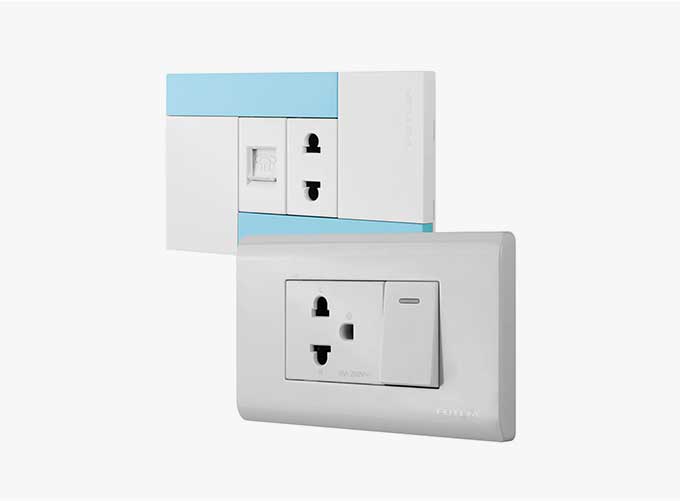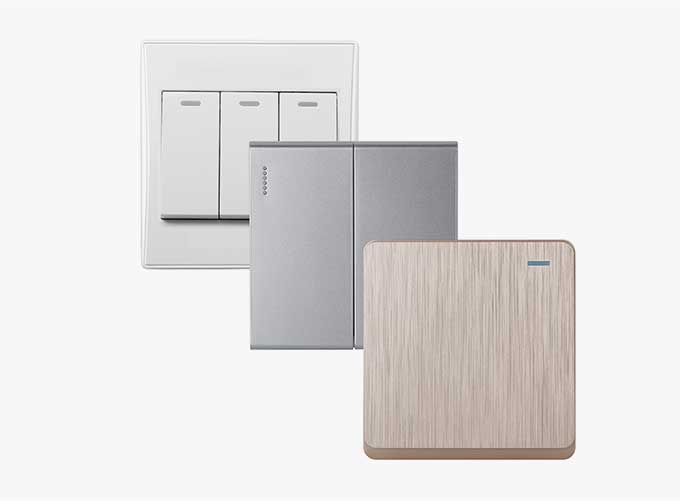Advantages of Futina's European Switches and Sockets

FUTINA European switches and sockets or we can simply call it EU standard wall switch socket which needs to fit into the EU type wallbox, and pass the law regulation of Rohs and Reach, and this range has many options of function keys, including 16A 220-250v single schuko socket outlet and double pole schuko sockets, IP indoor/outdoor devices and frame 1x, 2x, 3x, 4x, 2x2, 3x2, which can satisfy with you different demand to install.
To be more detailed, here's a list of the benefits of European wholesale switches and sockets by electrical socket manufacturers Futian:
Safety: European wall switch is designed to meet strict safety regulations, ensuring those quality switches and sockets are safe to use and can help prevent electrical accidents.
Compatibility: European sockets and switches are designed to be compatible with a wide range of electrical devices, making the European sockets easier to use in a variety of appliances and electronics without needing to worry about compatibility issues.
Convenience: A European wall socket is typically easy to install and use, and the wall switches and sockets can help simplify the process of connecting and disconnecting electrical devices.
Durability: European sockets are typically built to last, with sturdy construction and high-quality materials that can withstand frequent use and wear and tear over time.
Versatility: European sockets and switches are available in a variety of designs and styles, making it easy to find options that suit your needs and preferences.
What is European Switches And Sockets?
European switches and sockets are electrical devices used in the power supply systems of buildings in Europe. They are designed to meet the electrical standards set by the International Electrotechnical Commission (IEC) and the European Committee for Electrotechnical Standardization (CENELEC).
Features of european sockets and switches
European sockets and switches are designed to meet specific standards and are commonly used in various countries across Europe. Here are some key features of European sockets and switches:
Standardized Design: European sockets and switches generally adhere to the European standard known as the CEE 7/4 (Schuko) or CEE 7/7 (French) system. These standards ensure compatibility and safety across different European countries.
Two-Pin or Three-Pin Configuration: European sockets typically have either two-pin or three-pin configurations. The two-pin configuration consists of two round pins, while the three-pin configuration includes two round pins and a grounding pin.
Earth Connection: The grounding pin in European sockets is designed to connect electrical devices to the earth. This helps to protect against electrical shocks and ensures safety.
Shutter Mechanism: European sockets often feature a shutter mechanism that provides an additional layer of safety. The shutters cover the socket holes and prevent accidental contact with live electrical components, reducing the risk of electrical accidents, particularly for children.
Voltage and Current Rating: European sockets and switches generally support a voltage rating of 230 volts and a current rating of 16 amperes. However, specific countries may have variations in voltage and current ratings, so it's important to check the local standards.
Compatibility with European Wall Switches: European sockets are typically designed to be compatible with European wall switches. These switches are often rectangular or square in shape, with a rocker-style mechanism for turning lights on and off. They are usually flush-mounted on the wall and are available in various colors and finishes to match the décor.
Safety Standards: European sockets and switches comply with various safety standards, such as the International Electrotechnical Commission (IEC) standards and the European Union's CE marking requirements. These standards ensure that the sockets and switches meet specific safety, performance, and quality criteria.
How to Install an Outside Socket
To install a European outdoor socket, you will need the following tools and materials:
Tools:
Drill
Screwdriver
Pliers
Wire cutters/strippers
Materials:
European outdoor socket
Electrical wires (depending on the distance from the power source)
Cable clips
Wall plugs
Screws
Here are the steps to install a European outdoor socket:
Turn off the power supply to the area where you will be installing the socket.
Choose a suitable location for the socket. Make sure it is out of reach of children and away from water sources.
Mark the location where you will be installing the socket on the wall.
Drill a hole at the center of the marked location to insert the screws that will hold the socket in place.
Install the wall plugs into the holes.
Remove the cover of the socket and connect the electrical wires to the appropriate terminals. Refer to the manufacturer's instructions for the specific wiring details.
Once the wires are connected, place the socket into the wall and attach it using screws.
Use cable clips to secure the wires to the wall and prevent them from hanging loose.
Turn the power supply back on and test the socket to ensure it is working correctly.
Finally, replace the cover of the socket and seal any gaps around the edges to prevent water from entering.
If you want to order European outdoor socket or Europe wall outlet wholesale, you can consider us.
5 Considerations When Choosing European Wall Switch

Design and Appearance: European Wall Switch come in various designs and styles, so you should consider the overall decor of your home and choose a design that complements it. You can choose from classic or modern styles, and also consider the color options available.
Size and Type of Wall Box: European wall switches are designed to fit specific types of wall boxes. Make sure you know the size and type of your wall box before selecting a switch.
Voltage and Amperage Rating: Check the voltage and amperage rating of the switch to ensure it the European wall switches suitable for the electrical circuit it will be used in. In Europe, the standard voltage is 230V and the standard amperage is 10A.
Switch Type: There are various types of european wall switch, such as single-pole, double-pole, three-way, four-way, etc. Choose the switch type that best suits your needs.
Installation and Wiring: Consider the complexity of the installation process and whether you have the necessary wiring skills to install the switch yourself. If you are unsure, it is best to consult a professional electrician.
 English
English  日本語
日本語  français
français  Deutsch
Deutsch  Español
Español  русский
русский  português
português  العربية
العربية  tiếng việt
tiếng việt  বাঙালি
বাঙালি  हिंदी
हिंदी 












